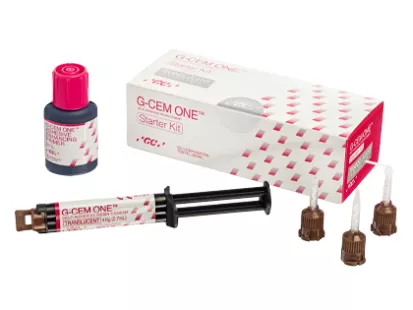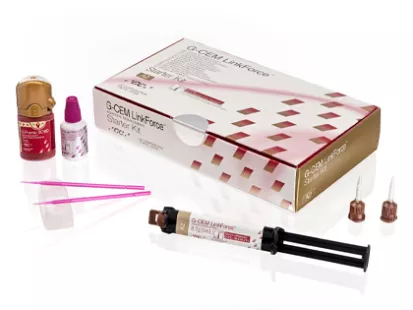Product Information
GC Initial LiSi Block is a fully crystallised lithium disilicate block that delivers optimal physical and aesthetic properties without firing. 1-6 This unique block features GC’s proprietary High Density Micronisation (HDM) technology for CAD/CAM dentistry to deliver high wear resistance, smooth margins and aesthetic final results. 1-6 This makes it an ideal time saving solution for single visit chairside treatments.
The unique ultrafine crystal makes it easy to grind and can be quickly milled in its fully crystallised stage. Thanks to GC Initial LiSi Block’s exceptional properties, high gloss and natural opalescence can be obtained in few minutes by polishing only and restoration is then ready for luting. 1-6* Optimised acid and wear resistance help to preserve the aesthetics of your restorations over time. 1, 3, 4, 5
GC Initial LiSi Block is available in six aesthetic shades and two translucencies. When more characterisation is required, the GC Initial™ ceramic line comprises fully synergistic aesthetic solutions.
PRODUCTS ON THIS WEBSITE ARE NOT AVAILABLE FOR PURCHASE BY THE GENERAL PUBLIC. ALWAYS READ THE LABEL AND FOLLOW THE DIRECTIONS FOR USE.
Why choose GC Initial™ LiSi Block?
Reduced chair time
- Just mill, polish and place! Initial LiSi Block offers reduced process time: no need to fire because it is fully crystallised. This results in saving 40%† of the time required to create your restorations
- Durable aesthetic & smooth margins
- Optimised acid and wear resistance to help preserve the aesthetics of your restorations over time 1, 3, 4, 5
- Excellent edge stability for smooth margins 2, 6
Natural opalescence
- Available in both high and low translucencies, GC Initial LiSi Block offers a natural opalescence in any light
Choose your preferred finishing procedure:
- Superior gloss can be obtained in a few minutes by polishing only, and the restoration is then ready for luting*
- For sophisticated aesthetic cases, remarkable results can be achieved with GC Initial Lustre Pastes NF and Initial Spectrum Stains*
*Source: GC R&D, Japan, Data on file
1. Hoshino T, Matsudate Y, Sasaki K (2020). Wear resistance of CAD/CAM glass ceramic blocks. J Dent Res 99 (Spec Iss A):1823,
(https://iadr.abstractarchives.com/abstract/20iags-3294486/wear-resistan…).
2. Kato K et al. (2020). Edge Chipping Resistance of Glass Ceramic Block for CAD/CAM. J Dent Res 99 (Spec Iss A):0083,
(https://iadr.abstractarchives.com/abstract/20iags-3315704/edge-chipping…).
3. Kariya S, Azuma T, Fusejima F (2020). Wear Resistance of Novel Machinable Glass Ceramics. J Dent Res 99 (Spec Iss B):1
(https://iadr.abstractarchives.com/abstract/jadr2020-3000018/wear-resist…
4. Hoshino T, Matsudate Y, Sasaki K (2019). Chemical durability of CAD/CAM glass-ceramic blocks. J Dent Res 98 (Spec Iss A):0100,
(https://iadr.abstractarchives.com/abstract/19iags-3168964/chemical-dura…).
5. Kojima K et al. (2019). Wear properties of lithium silicate glass ceramic block for CAD/CAM. J Dent Res 98 (Spec Iss A): 1259, (
https://iadr.abstractarchives.com/abstract/19iags-3178759/wear-properti…).
6. Akiyama S et al. (2019). Edge-Stability of the Novel Lithium Disilicate Glass-Ceramic Block for CAD/CAM. J Dent Res 98 (Spec Iss A): 0097,
(https://iadr.abstractarchives.com/abstract/ced-iadr2019-3223282/edge-st…).






